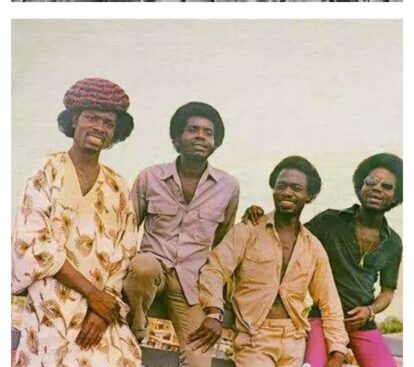Fashions are like humans with a life span. They evolve, grow and then go into oblivion with time.
In the spirit of Nigeria’s 63rd Independence Day celebration, Daily Trust recalls eight fashions that were talk of the town post-independence.
Long, Oversized Outfits
In 1960s pictures, most Nigerian women wore long dresses and hats. It was a popular sign of affluence and elegance. Women in the sixties adorned themselves in this passionate dress unrestrained.
Oversized outfits were dominant in some parts of Nigeria in the sixties. They were the choice of “happening” youths and ruled the town throughout the era. However, a few youths are still keeping the fashion style alive by adorn themselves in oversized dresses.
- Judgement: Tinubu’s Minister, Deputy Governor, Senator Storm Ogun Tribunal
- PHOTOS: Judgment Day In Taraba
Afro Hair

The almighty afro is a hairstyle worn predominantly by black people, in which naturally kinky or tightly curled hair is styled in a rounded shape.
Men and women in Nigeria in the sixties viewed afros as a yardstick for identifying those at the prime of social ladder. Stylishly grown afros could make one a beauty queen.
Dashiki

The Dashiki has its root in the Yoruba tribe. The word is borrowed from the Hausa fabric term “Dan Ciki”, meaning “underneath”. It was a small tunic worn by men under longer robes. The original fabric used to create the Yoruba Dan Ciki, a work outfit, was hand-woven strip cloth.
Dashiki served as a symbol of Africanism, and was a common sight on the streets of Nigeria in the sixties. Men and women wore shirts made of Dashiki to express elegance. It has evolved over the years into a modern pattern.
Babar ringa

The traditional malim-malim or babar riga is gradually phasing out not only in size but also in embroidery. An alhaji would employ the services of a needle-worker to decorate his material for days if not a month just to appear different. The practice is aggressively left to the kingly.
Babar riga is to Hausa what shirt on wrapper and agbada are to Igbo and Yoruba. The dresses were symbols of opulence and maturity.
In decades past, an average Igbo man would dress in wrappers and shirt, wedging his steps with a walking stick as a symbol of perfectionism and gentility. But gradually this fashion has dwindled and is giving way to suits and ties.
Tie and dye indigo cloth

Historically, Hausa people were identified by their tie and dye indigo cloth adorned with traditional symbols. This practice owes its survival to the historic dye pits in northern states like Kano. It was an industry with a huge economic value.
Bouffants

Hair attachment has since eclipsed bouffants, pompadours and poodle. The three had a long reign.
Bags

In the 60s women’s love for bags was brutal. It is safe to say that no ensemble was complete in the 60s without a bag that women carry bags wherever they go.
Palazzo Trousers

Palazzo trousers are known for their wide and flowing legs. They were a symbol of elegance and grace in the 1960s through to 70s.

 Join Daily Trust WhatsApp Community For Quick Access To News and Happenings Around You.
Join Daily Trust WhatsApp Community For Quick Access To News and Happenings Around You.